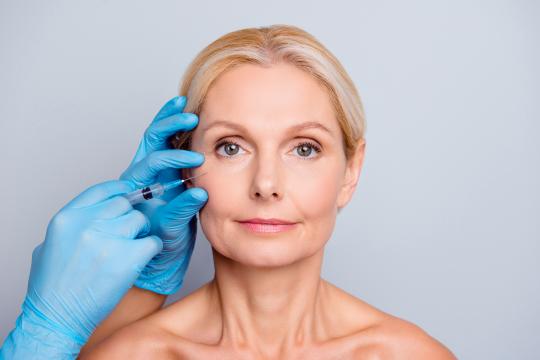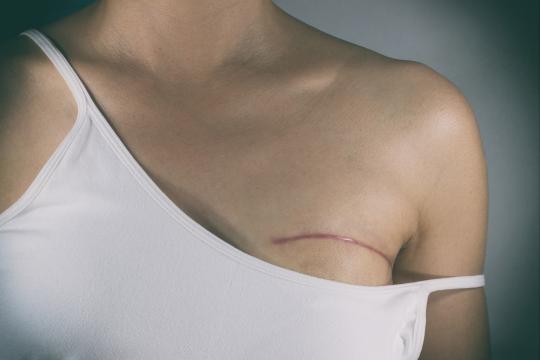
It’s important to embrace the whole self-acceptance thing—but it’s not always easy. Especially as we obsess daily over every wrinkle, every jowl and every undereye bag. All creeping ever-deeper across our faces with the passing of each. new. day. Okay. That went dark, but it is a conundrum.
The truth is, most of us are our own worst enemy—scrutinizing everything— marionette lines, crow’s feet, furrow lines. You name it and we’ll… er… rename it some unflattering thing or another. At some point it can become too much. And maybe that’s the point that you decide to do something about it. Whether you’ve already made that decision or are teetering on the edge of it—this post is for you. ‘Cause decisions require information and that’s exactly what we got. So let’s talk about facial fat transfers. What they are. How they work. And whether or not a facial fat transfer might be right for you? Here we go.
What is a facial fat transfer?
A facial fat transfer (also called fat grafting) is a procedure in which your plastic surgeon extracts fat from another area of the body, and then re-injects those fat cells into areas on the face that are in need of a little rejuvenation. Kind of like dermal filler injections like Restylane or Juvederm, but different ‘cause the “filler” is coming from your own personal source—your body fat. And did we mention that the results are also much longer lasting? Well, we did now.
According to the American Society of Aesthetic Plastic Surgery, over 60,500 women and 2,100 men benefitted from fat transfer procedures in 2018 alone. Known to be safe, natural looking and effective, facial fat transfers are typically used to fill in areas of the face like nasolabial folds and marionette lines, crow’s feet, too thin lips, forehead wrinkles, sunken cheeks, even acne scars and those pesky lines between your nose and mouth. Most areas that can be addressed with other types of filler, can be treated with a fat transfer procedure. And while our focus here today is on facial fat transfer, this treatment can also be used to rejuvenate breasts, butts and hands.
How does it work?
Fat transfers are surgical procedures—so right off the bat we’ll dispel you of the notion that this might be as simple as a typical Botox /dermal filler appointment. It’s not. #yourewelcome. A fat transfer is an invasive procedure that must be performed by a highly-skilled and board-certified plastic surgeon in an appropriate surgical facility. And depending on the type of fat grafting to be done and the scope of work, it will typically require some type of anesthesia (procedures that treat only small areas may only require local numbing, but your doctor is in charge of making that decision).
During the procedure, your surgeon will make a small incision (incisions) into some area of the body that’s storing viable excess fat—maybe the outer thigh, abdomen or love-handle area. By inserting a thin cannula and using liposuction techniques, your surgeon will then suck out the aforementioned excess fat. Once the fat is extracted, it is processed, separating out the bits and bobs (debris, excess fluid and dead cells) from the good stuff—viable fat cells. These viable fat cells are then re-injected into the areas of the face that are lacking their once youthful plumpness—the aforementioned marionette and smile lines, forehead wrinkles, crow’s feet, etc… As long as the area being injected has a good blood supply with which to nourish the injected fat cells, these cells can re-establish themselves in their new locale. Voila! A safe, successful and long-lasting fat transfer procedure.
Now let’s unpack that whole “long-lasting” thing, shall we?
The timeline for results will depend primarily on how highly skilled your surgeon is in the harvesting, separating and injecting of viable fat cells. Yet another reason to vet, re-vet and triple-vet your surgeon. Remember, you are your own best advocate. While there’s the chance that not all the transferred fat cells will survive (even with the very best surgeons), the goal is to have the greatest number of injected fat cells find nourishment and thrive. The greater their survival rate, the longer-lasting the result—think permanent to not-so-permanent and possibly even necessitating touch-up procedures.
Who’s a good candidate for facial fat transfers?
As always, the best way to judge your candidacy for any procedure is a sit-down with your board-certified plastic surgeon in which you’ll commit the faux-pas of “over-sharing” and your doctor won’t fault you for it one bit. After that, we’ve sorted out a few pointers to assess your own candidacy. If you’re ticking off some of these boxes, a sit down with your surgeon might be your next step:
- You’re tired of the 2 - 4 month touch ups associated with other temporary dermal fillers, and would like results that are more long-lasting.
- You’re looking for a more “natural” alternative to other dermal fillers, and what’s more natural than your own fat cells?
- You don’t have circulation problems from a medical condition or from smoking, and you’re willing to make any necessary lifestyle changes recommended by your doctor.
- You have some spare fat cells just lying around. If you’re thin as a rail, your fat harvest may be as barren as a Dustbowl farmland. (Two idioms, one sentence. Nice.) Back to temporary dermal fillers for you.





